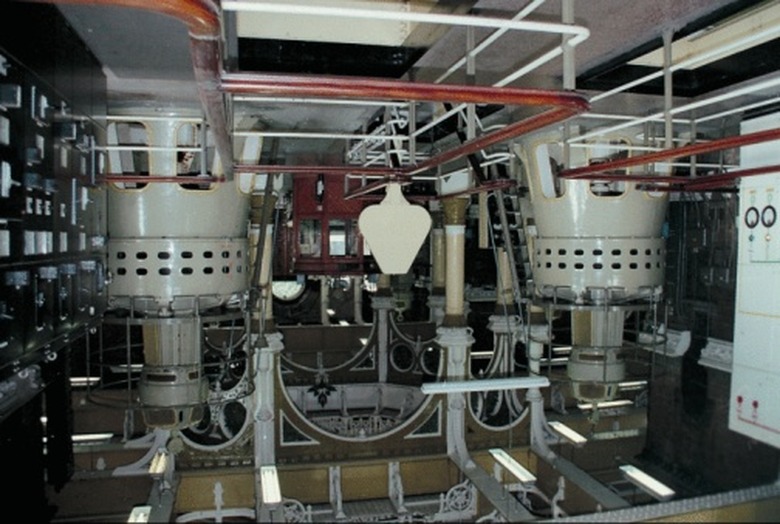How To Convert RPM To Linear Speed
Rotational motion is one of the most important things to understand when you're learning classical physics, and converting a rotational velocity to a linear speed is a key task in many problems.
The calculation itself is fairly straightforward, but it's complicated if the angular velocity (i.e. the change in angular position per unit time) is expressed in a non-standard form like revolutions per minute (RPM). However, converting RPM to speed is still easy enough after you convert the RPM to a more standard measure of angular velocity.
RPM Formula and Explanation
RPM Formula and Explanation
RPM is a measure of the number of complete revolutions in a minute. For example, if a wheel is rolling so it completes one full revolution per second, in 60 seconds it will have completed 60 revolutions, and so it would be rotating at 60 RPM. An RPM formula that you can use to find the RPM in any situation is:
From this formula, you can calculate RPM in any situation and even if you've been recording the number of revolutions for less than (or more than) a minute. For example, if a wheel completes 30 revolutions in 45 seconds (i.e. 0.75 minutes), the result is: 30 ÷ 0.75 = 40 RPM.
RPM to Angular Velocity
RPM to Angular Velocity
Most situations in physics will use angular velocity (ω) instead of RPM, which is essentially the angular change in position of an object per second, measured in radians per second.
This is a much more useful format when you're converting RPM to linear speed, because there is a simple relation between angular velocity and linear speed, which doesn't exist in explicit form for RPM. Given that there are 2π radians in a complete revolution, RPM is really telling you "the number of 2π radian rotations per minute."
Using this, it's easy to see how to convert between RPM and angular velocity: First, convert from per minute to per second, then convert the number of revolutions to a value in radians. The formula you need is:
In words, you divide by 60 to convert to revolutions per second, then you multiply by 2π to turn this into a value in radians per second, which is the angular velocity you're looking for. For example, with the wheel in the previous section traveling at 40 RPM, you convert to angular velocity as follows:
Angular Velocity to Speed
Angular Velocity to Speed
From this point onward, the conversion from RPM to linear speed is straightforward. The formula you need is:
Where ω is the angular velocity you calculated in the previous step, and r is the radius of the circular path for the motion, and you multiply these together to find the linear speed. For example, with the wheel rotating at 40 RPM, i.e. 4.19 rad/s, assuming a radius of 15 cm = 0.15 m, the velocity is:
There are a couple of additional points it's worth keeping in mind when you perform these calculations. First, the direction of the linear speed you calculate is always tangential to the point on the circle you're calculating for.
For example, if you were swinging a yo-yo in a giant circle, but the string broke, the yo-yo would fly off in whatever direction it was traveling in at the instant the string broke. Second, it's crucial that you think about units when you're calculating rpm. The units of distance you use for the radius will be the same as the units of distance in your final speed, and so it's better to stick with meters or feet even if the number for the radius ends up being very small.
Cite This Article
MLA
Johnson, Lee. "How To Convert RPM To Linear Speed" sciencing.com, https://www.sciencing.com/convert-rpm-linear-speed-8232280/. 14 February 2020.
APA
Johnson, Lee. (2020, February 14). How To Convert RPM To Linear Speed. sciencing.com. Retrieved from https://www.sciencing.com/convert-rpm-linear-speed-8232280/
Chicago
Johnson, Lee. How To Convert RPM To Linear Speed last modified March 24, 2022. https://www.sciencing.com/convert-rpm-linear-speed-8232280/
